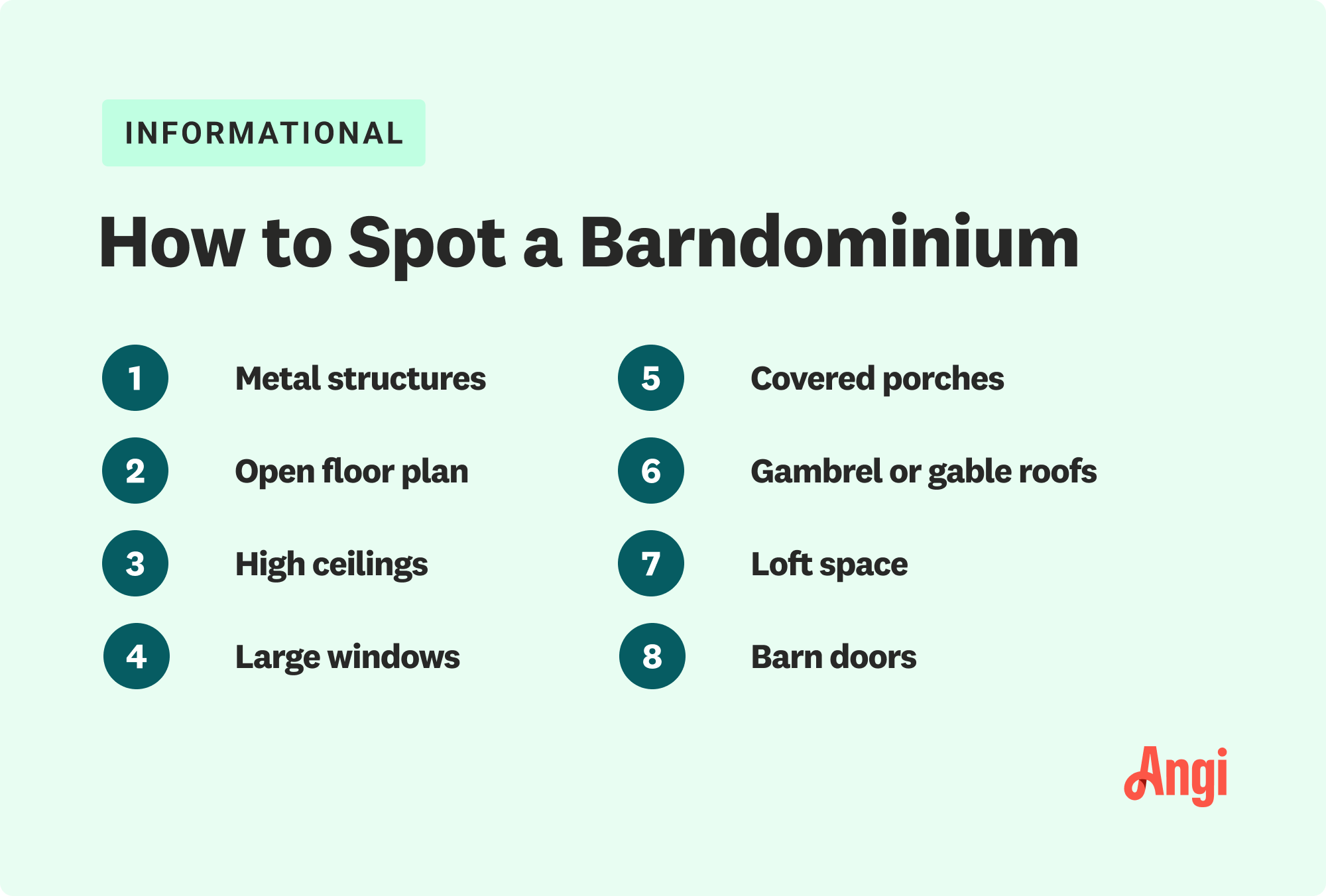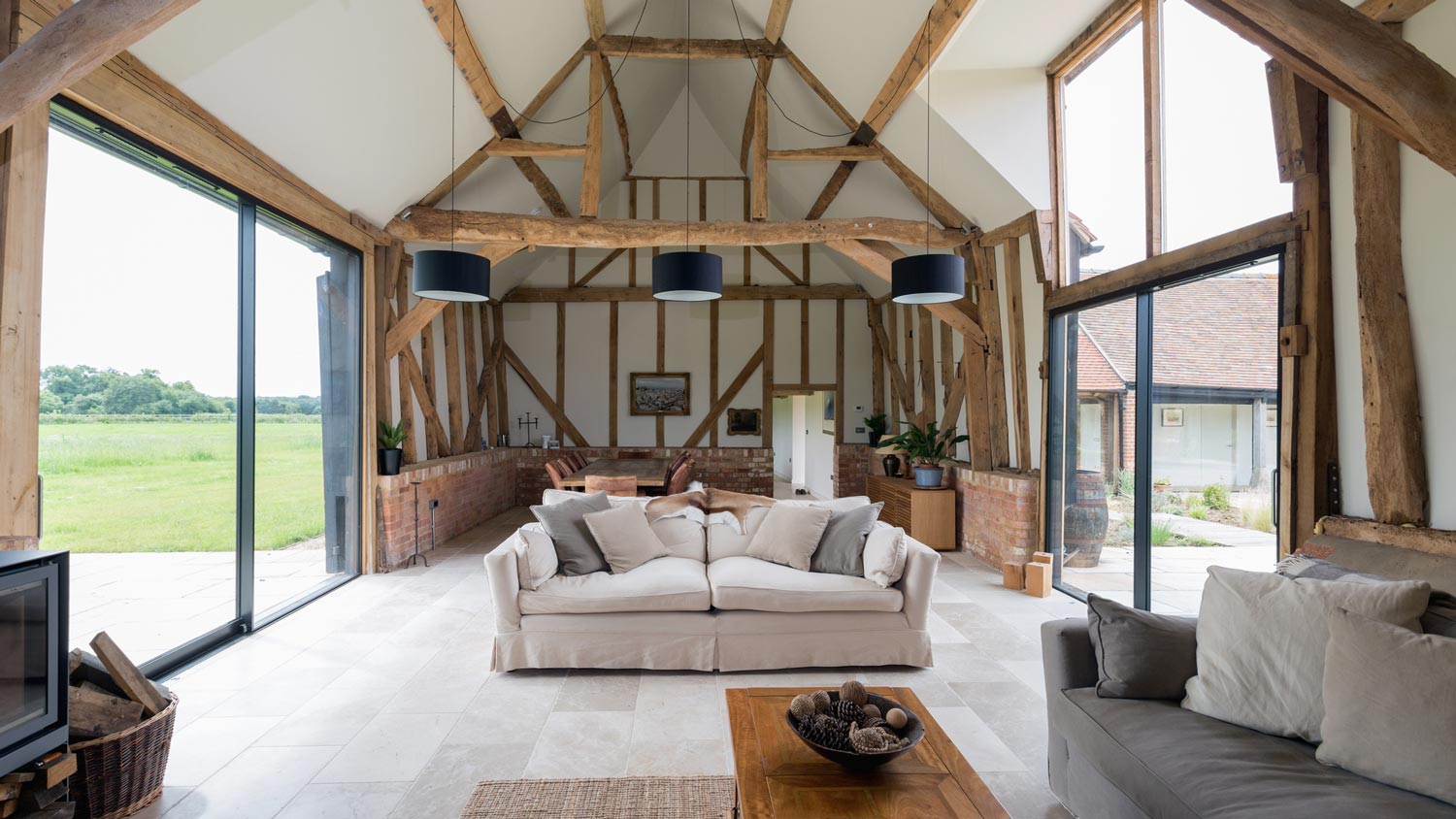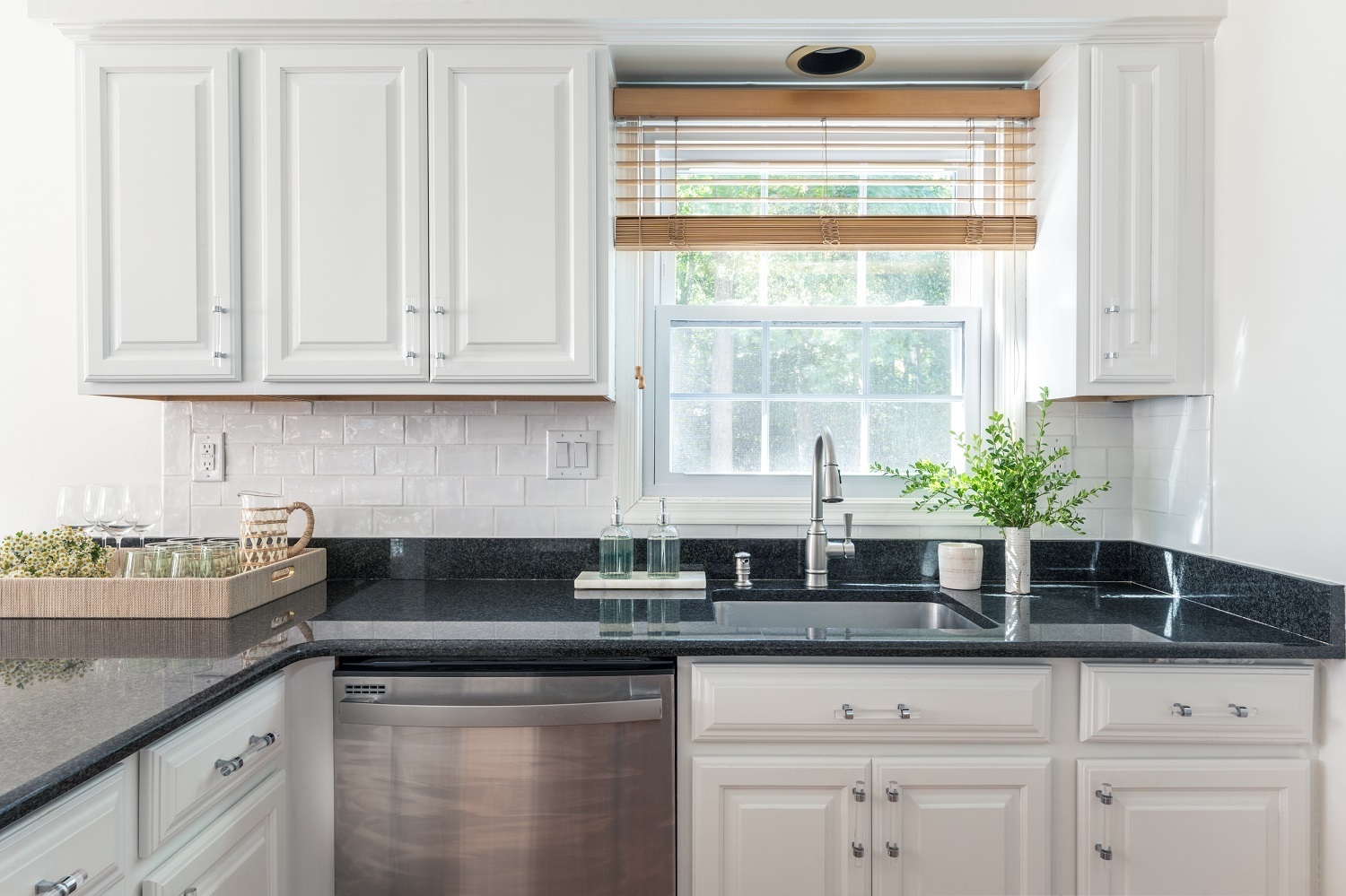Everything You Need to Know About Barndominiums, the Hottest New House Style
Vast spaces and unique rustic style are storming the home design world


Barndominiums have become popular in the past decade
Post-frame construction allows for tall, open interior spaces
Features include rustic looks, vaulted ceilings, and exposed beams
These versatile, durable homes can be built quickly and affordably
While still a niche market, builders continue to offer more variety
Fresh on the alternative housing scene is a style that combines the appeal of a rustic barn with modern amenities that’s quick and affordable to build. We’re talking about the barndominium—a portmanteau of barn and condominium that has surged in popularity thanks to home renovation shows. Dive in to learn more about this trend and find out if barndominium life is for you.
What Is a Barndominium?

Barndominiums, or “barndos” for short, put a modern twist on an agricultural home design that historically allowed farmers to live and work in one place, often keeping livestock such as horses on the first story with a loft-like living space above.
While these homes have had a popular resurgence within the last decade, it’s not because of the modern homeowner’s need to house livestock. Instead, barndominium floor plans grant the chance to create unique and spacious homes at low cost, with space for large garages, workshops, home businesses, and hobby areas (aka, there’s so much room for activities).
Sometimes existing barns are converted for residential use to create a barndo. Others are built from scratch using post-frame construction, which differs dramatically from a traditional stick-frame home.
Post-Frame Barndo vs. Traditional Stick-Frame Home
In stick-frame construction, a home’s framing is typically built using wood studs or steel. Interior walls provide structural support to keep the home standing.
In post-frame construction, large columns of engineered wood are buried several feet deep. Along with wooden trusses, they transfer the weight of the home into the ground without the need for interior load-bearing walls. This allows for larger interior spaces.
Common Features of a Barndominium

While barndos can be identified by their traditional barn-like exterior, several other defining features set them apart.
1. Metal Building Structures
One notable feature of many barndominiums is a metal exterior, ranging from basic to elaborate and decorative.
2. Open Floor Plan
Spacious open plans are standard in most barndo designs. Bedrooms, bathrooms, kitchens, dining, and office spaces are partitioned into private rooms separate from a larger great room, typically on the second story if there is one.
3. High Ceilings
Towering vaulted ceilings add to the spaciousness, and many designs retain exposed wooden beams for a rustic feel. These beams can be highly decorative and often become the home’s focal point.
4. Large Windows
Large, tall spaces make way for large windows and glass doors, allowing in natural sunlight and breezes.
5. Covered Porches
Whether it’s a front, rear, or full wrap-around porch, the covered porch is a hallmark of barndominium design, creating outdoor spaces for meals and relaxation.
6. Gambrel or Gable Roofs
Gable refers to roofs with two slopes that meet along one edge. One type of gable roof common on barndominiums is the gambrel, or Dutch roof. These feature an upper slope at a shallow angle and a lower slope at a steep angle, increasing interior space.
7. Loft Space
Tall barndominium designs lend themselves to multipurpose lofts, often accessed via rustic wooden ladders or staircases. These practical spaces can function as sleeping or recreational areas.
8. Barn Doors
No barn is complete without the classic sliding barn door. These can be used as an entrance to a shop or garage, or as a stylish cover for large glass windows.
Barndominum Pros
Barndominiums have gained mainstream popularity for a number of reasons.
Versatile: The open concept is a blank canvas for any interior design style, and the lack of interior walls creates a free-flowing space that’s easy to renovate and expand.
Quick and easy to build: While traditional homes can take six months to a year, barndominium construction itakes less than six months—sometimes only weeks.
Steel construction: Steel buildings won’t rot and can better withstand severe weather, moisture, mold, fire, and pests compared to those with traditional wood frames.
Affordable: With prefabricated components, pre-designed plans, and barndominium kits, the cost of the pole barn exterior can be less than that of traditional homes.
Eco-friendly: Sustainable building materials and energy-efficient design helps lower a barndo’s carbon footprint and help homeowners save on heating and cooling costs.
Barndominum Cons
Despite the upsides, barndominiums do present a few disadvantages compared to traditional homes.
Poor sound control: A metal exterior and few interior walls can lead to magnified outdoor sounds and a lack of noise insulation.
Suited to rural areas: The aesthetic and large size of barndominiums means they generally don’t fit into neighborhood communities.
Niche market: When it’s time to sell, barn-like exteriors may not appeal to most buyers. When building, ask your local contractors about the variety they offer in barndo exteriors.
Corrosion: Like wooden homes are prone to rot, metal homes may corrode in more humid climates.
Permitting: Permits are needed for steel buildings, and they’re often much different than for wood construction. Certain areas will restrict the floor plans and materials you can use.





- Bathroom Remodeling
- Kitchen Remodeling
- Shower Installation
- Stair Installers
- Bathtub Installation
- Shower Door Installers
- Kitchen Design
- Bathroom Design Companies
- Storm Shelter Builders
- Pre-Made Cabinets
- Kitchen Refacing
- Bathtub Replacement
- Ceiling Tile Installation
- Suspended Ceiling Companies
- Residential Designers
- Stair Builders
- Remodel Designers
- Shower Enclosures
- Home Renovations
- Kitchen Renovations
- Garage Remodeling
- Grab Bar Installation
- Walk-In Tub Installers
- Tub to Shower Conversion
- Balcony Contractors
- Everything You Need to Know About Building a Barndominium
- 7 Brilliant Barndominium Exterior Colors
- 9 Gorgeous Ways to Repurpose Barn Doors in Your Home
- What Is a Pole Barn?
- What Is an A-Frame House? Everything You Need to Know
- Parts of a House: From the Foundation to Finishes
- 14 Common Roof Types and Their Pros and Cons
- 8 Gable Roofing Pros and Cons to Know About
- 7 Best Types of Gable Roofs for Homes
- 11 Home Addition Ideas to Personalize Your Space















